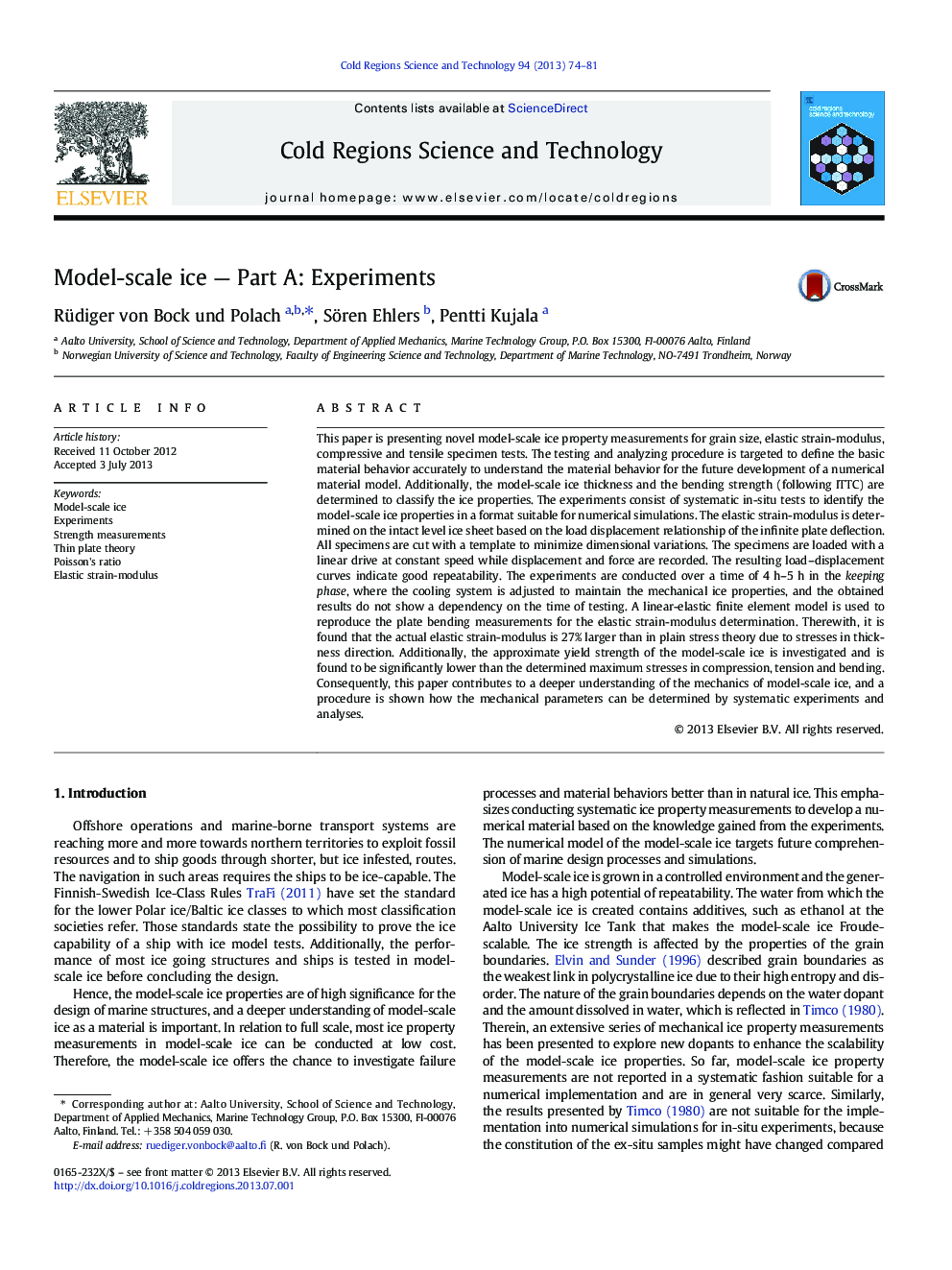| Article ID | Journal | Published Year | Pages | File Type |
|---|---|---|---|---|
| 6426977 | Cold Regions Science and Technology | 2013 | 8 Pages |
â¢Novel experimental setups are presented for in-situ testing.â¢Shortcoming of thin plate theory for elastic modulus determination.â¢FE analysis to determine linear elastic limit of model scale ice.â¢A large part of the model scale ice deformation process is not linear elastic.
This paper is presenting novel model-scale ice property measurements for grain size, elastic strain-modulus, compressive and tensile specimen tests. The testing and analyzing procedure is targeted to define the basic material behavior accurately to understand the material behavior for the future development of a numerical material model. Additionally, the model-scale ice thickness and the bending strength (following ITTC) are determined to classify the ice properties. The experiments consist of systematic in-situ tests to identify the model-scale ice properties in a format suitable for numerical simulations. The elastic strain-modulus is determined on the intact level ice sheet based on the load displacement relationship of the infinite plate deflection. All specimens are cut with a template to minimize dimensional variations. The specimens are loaded with a linear drive at constant speed while displacement and force are recorded. The resulting load-displacement curves indicate good repeatability. The experiments are conducted over a time of 4Â h-5Â h in the keeping phase, where the cooling system is adjusted to maintain the mechanical ice properties, and the obtained results do not show a dependency on the time of testing. A linear-elastic finite element model is used to reproduce the plate bending measurements for the elastic strain-modulus determination. Therewith, it is found that the actual elastic strain-modulus is 27% larger than in plain stress theory due to stresses in thickness direction. Additionally, the approximate yield strength of the model-scale ice is investigated and is found to be significantly lower than the determined maximum stresses in compression, tension and bending. Consequently, this paper contributes to a deeper understanding of the mechanics of model-scale ice, and a procedure is shown how the mechanical parameters can be determined by systematic experiments and analyses.
